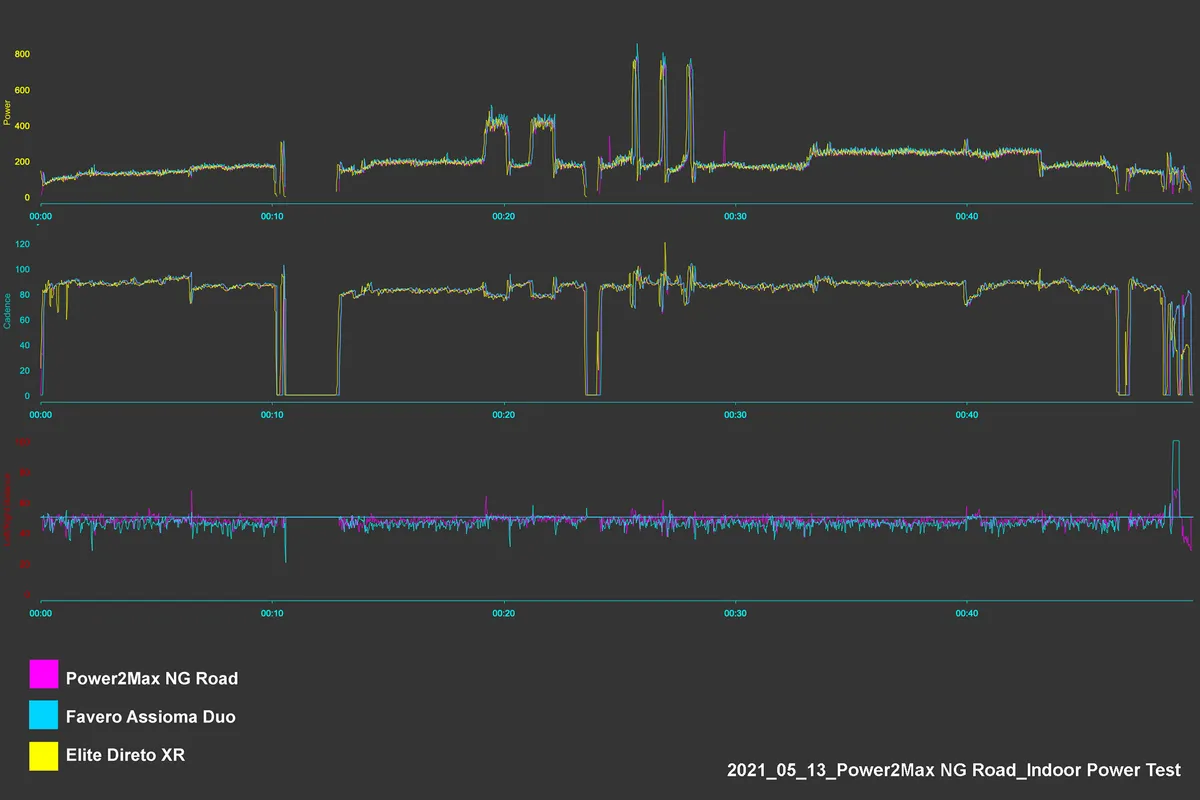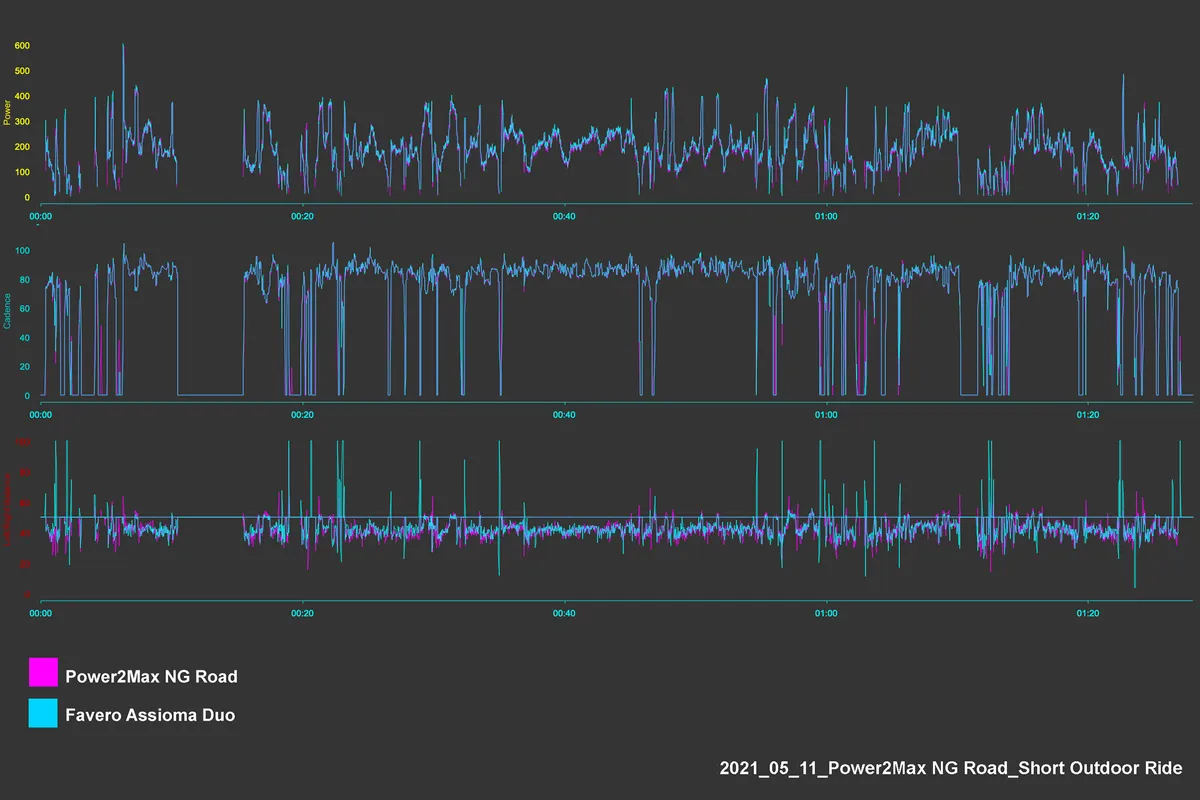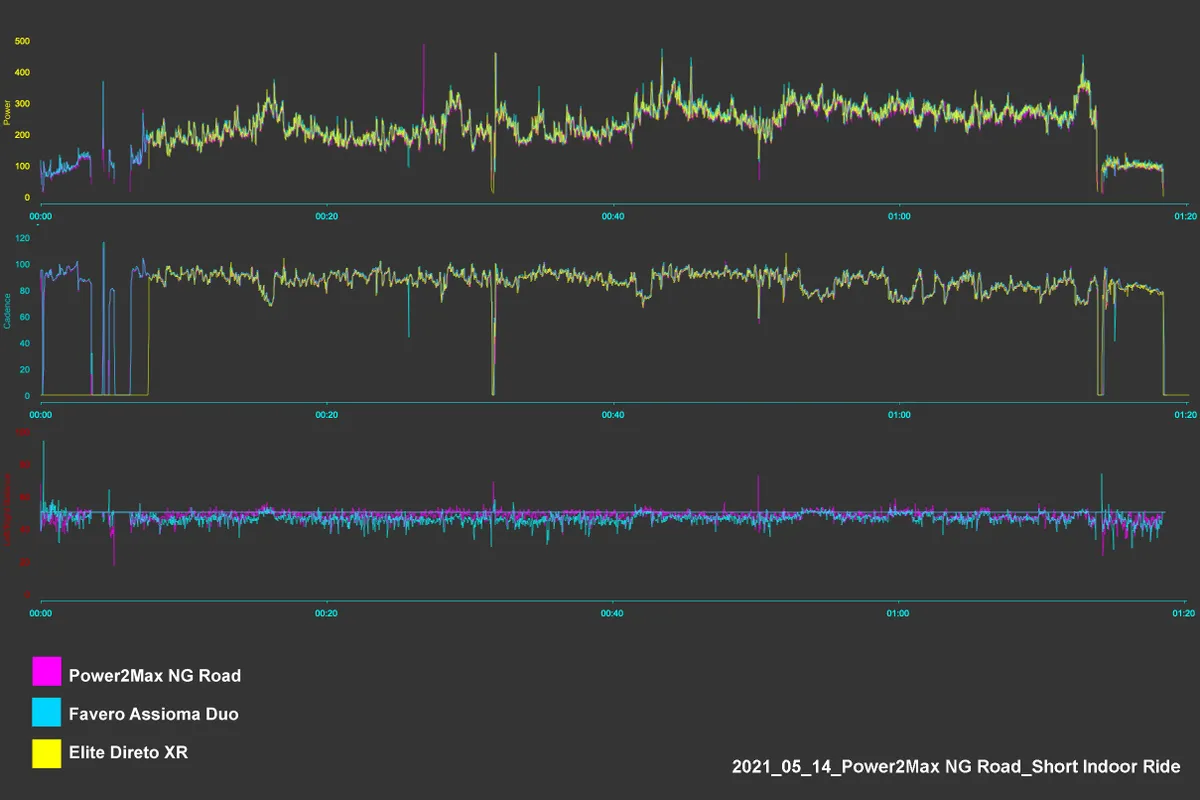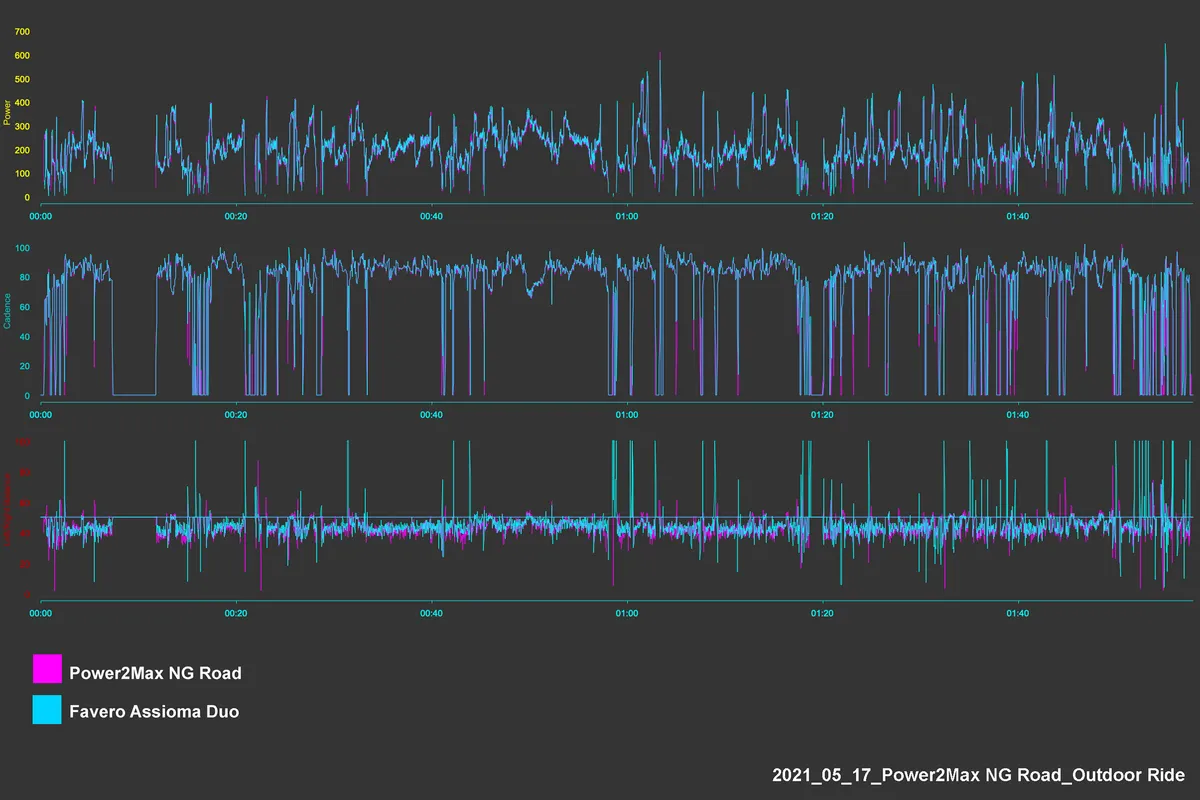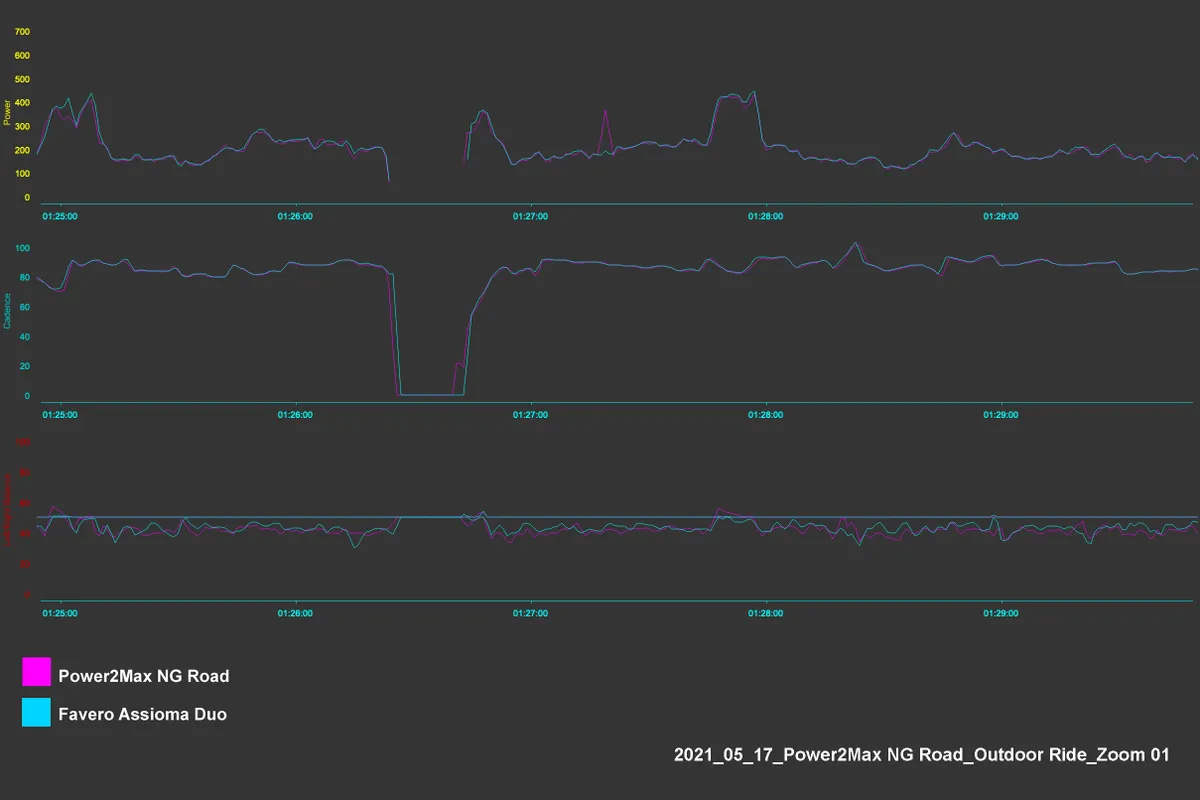The Power2Max NG Road is a modular spider-based power meter that offers accurate and reliable power measurement, wide-ranging crank and chainring compatibility, good battery life and a lengthy warranty.
It offers a user-friendly and trouble-free experience in general use, but an issue with performing zero-offsets on Garmin Edge bike computers and the occasional random power spike did somewhat tarnish my time with it.
If you’re looking for a spider-based power meter, the Power2Max NG Road is a strong contender, but the niggles are hard to overlook at this price point.
Power2Max NG Road installation
Given how many options there are for cranks and BCD (bolt circle diameter), the precise details of the installation procedure will naturally vary according to which options you choose.
As I’m running a Shimano drivetrain on my test bike, I opted for an NG Road spider with aluminium Rotor Aldhu-R 24 cranks, with a 110 4-S (Shimano four-bolt pattern) BCD. This combination costs €1,190.
This meant I could install the crankset on my Giant TCR Advanced Pro 2 Disc long-term test bike (which has a Shimano BB86 bottom bracket), and use the existing Shimano 105 R7000 chainrings.
The power meter spider doesn’t make any concessions to integrating the raised arms on the Shimano chainrings, so it’s not the cleanest looking setup, but it functions flawlessly on the bike.
If you wanted something to match the cranks, you could use Rotor’s 4-bolt 110BCD chainrings instead.
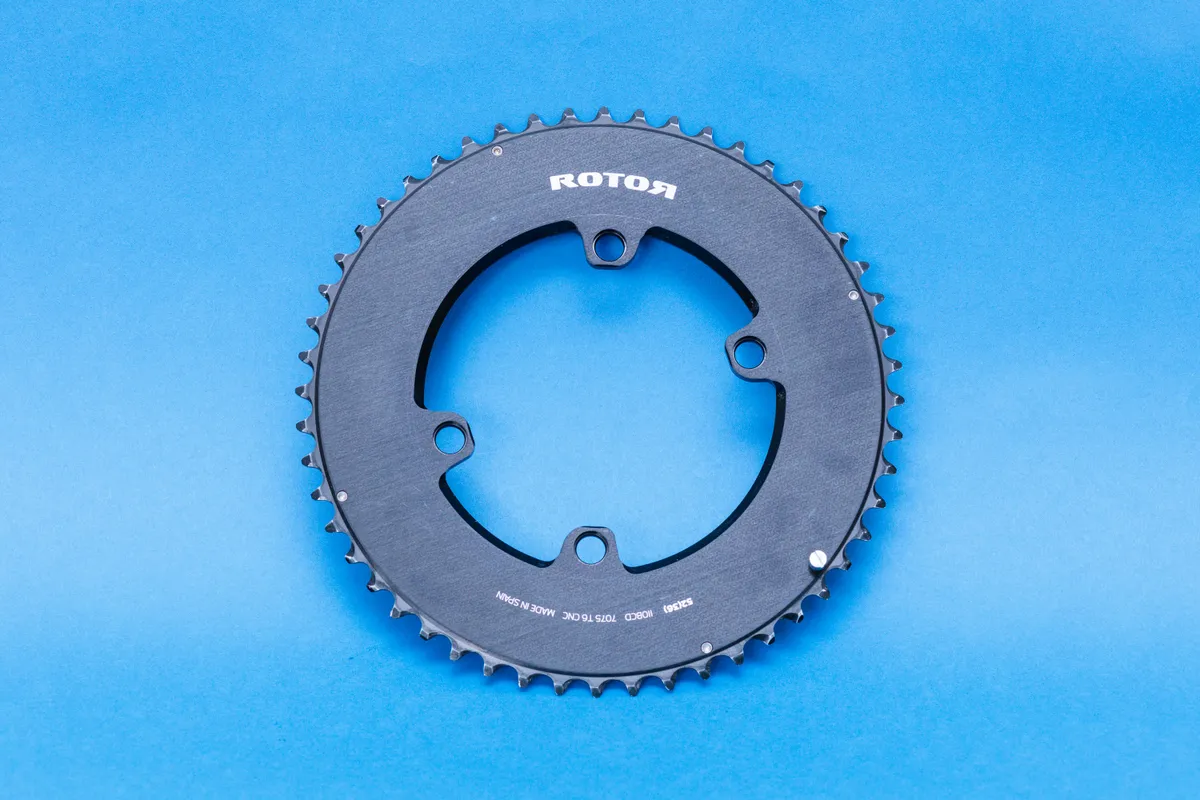
Likewise, if you’re running a different groupset or bottom bracket, then you can choose a bolt pattern, BCD, crankset and chainrings to suit your setup. There are too many options to list here, but most people will be able to find something to fit their drivetrain and bike.
Alternatively, if you already have a compatible crankset, you can also buy the power meter spider separately for €990.
The NG Road spider and cranks arrived unassembled, but the assembly process was simple enough once I’d figured out what was required. The tools needed for my specific combination are a 10mm and a 2mm Allen key for the cranks, plus a T30 Torx key for the Shimano chainring bolts.
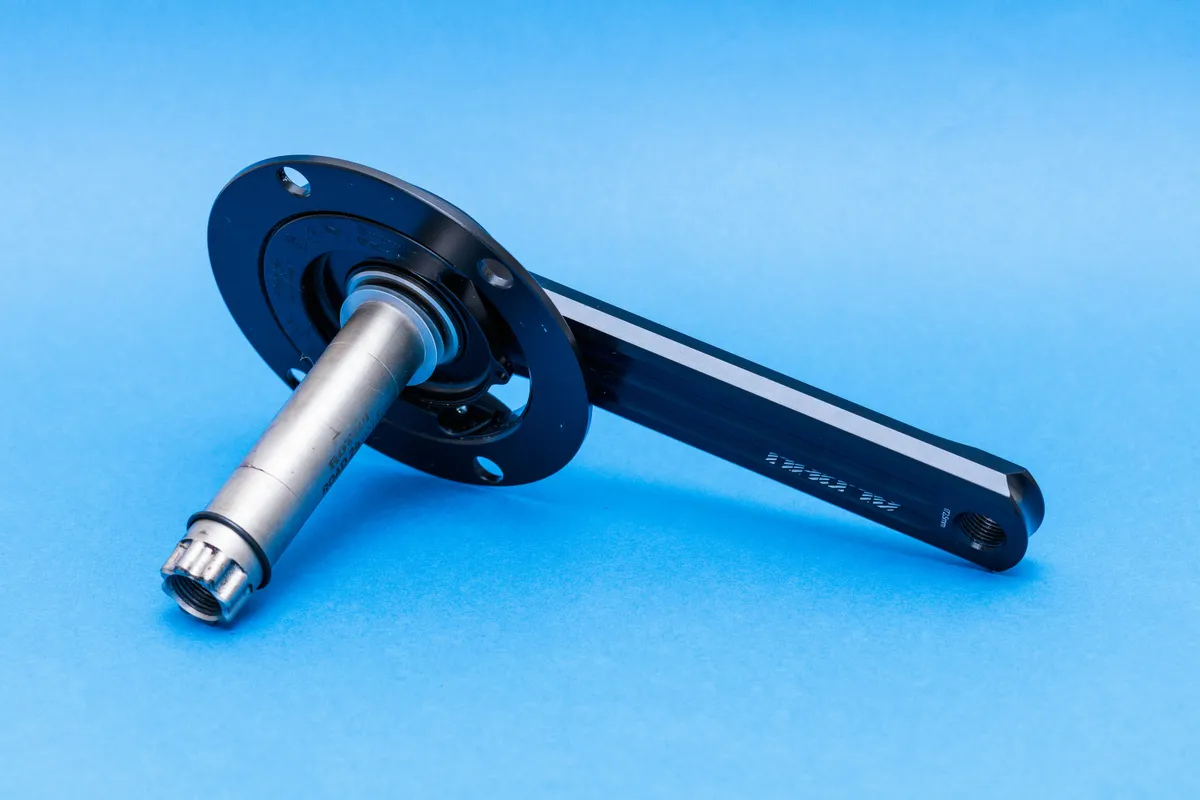
As with most other power meters, Power2Max does recommend using a torque wrench to tighten the crankset onto the spider, and when installing the power meter on your bike (I used a Park Tool TW-6).
In terms of mass, the power meter spider itself weighs 148g, with the Rotor crankset adding 505g. Adding the Shimano 105 chainrings (52/36t, 217g) gives a total system weight of 870g. If weight concerns you, there are lighter crank and chainring options available.
Power2Max NG Road usage notes
The NG Road uses a rechargeable battery, with a magnetic USB charging cable and a claimed battery life of 150 hours. At just over 1.5m long, the charging cable is about long enough that you probably won’t need an extension lead, but I wouldn’t have minded something longer still.
With all the electronics being located at the driveside chainring spider, the NG Road is also well protected from crash or accidental damage. You’re not tied to a specific crank length either.
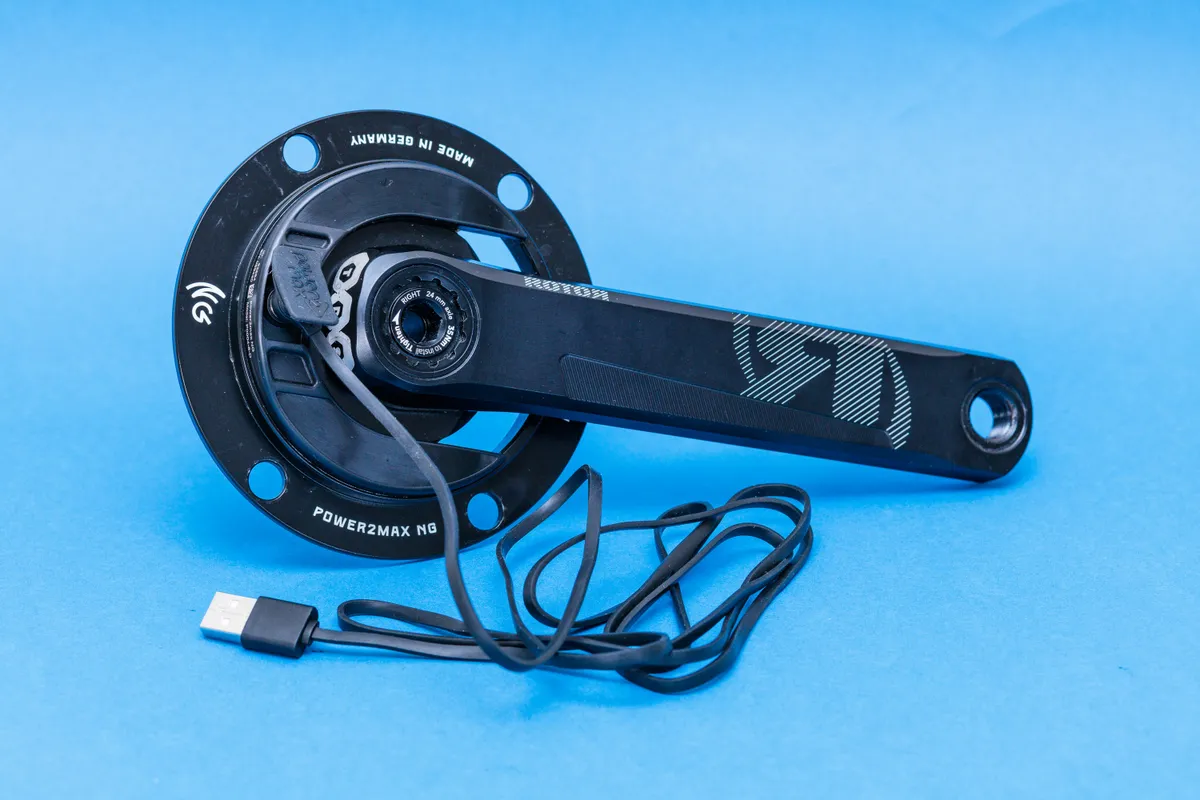
Once on the bike, the NG Road power meter can be activated by spinning the pedals. It has both ANT+ and Bluetooth capabilities, and can connect to compatible bike computers and devices via either protocol.
Power2Max also has a dedicated smartphone app for iOS and Android, which can be used to register the power meter, check the battery charge level, modify settings, update the firmware and send diagnostic information to Power2Max in the event of problems. It’s quite a slow app, but it does the job.
The NG Road connected quickly and easily to my Garmin Edge 830 bike computer, and I didn’t experience any data dropouts during testing.
I did run into an issue with zero-offset failures when using Garmin Edge bike computers, however. I tried multiple times with two different Edge 830’s and an older Edge 800, but it kept returning an error message: “Calibration failed. Calibration error 2.”
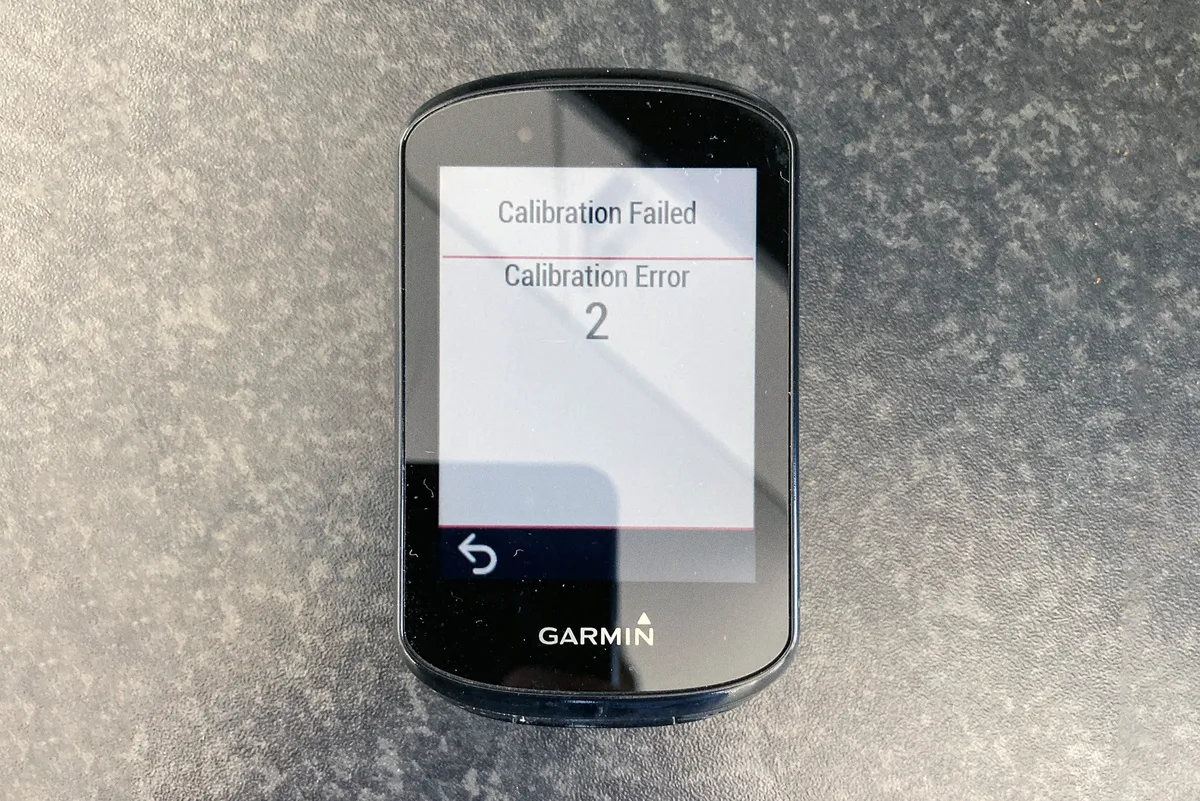
According to both Power2Max and Garmin this error message is supposed to indicate the cranks were moving during the calibration procedure, but that wasn’t the case.
Power2Max recommended turning off torque and Bluetooth data broadcasting via the smartphone app, which did improve the success rate somewhat. It still didn’t work every time, though, and those who use the Bluetooth functionality to connect to indoor cycling apps might find this solution a non-starter.
This issue isn’t a dealbreaker because you can perform zero-offsets via the Power2Max smartphone app (which worked every time I tried it), but that is a less convenient option than using a bike computer.
Power2Max suggested the issue might lie with the Garmin Edge bike computers, but I’ve had no similar issues with any of the many other power meters I’ve used with these computers (including an FSA Powerbox, which is a rebranded Power2Max NGEco power meter). Both Edge computers and the NG Road power meter were running the latest available firmware.
For its part, Garmin says there are no known incompatibilities between any of its devices and the Power2Max NG Road.
I did try installing the latest beta firmware for the Edge 830, as the changelog notes ‘Improved power meter calibration and software updates’, but this didn’t make any difference – the zero-offset calibration still failed most of the time.
All that said, Power2Max does state there’s generally no need to perform manual zero-offsets, other than immediately after installing it on a bike.
The NG Road has an auto-zero function that activates every time you stop pedalling for two seconds or more. Power2Max says this function alone is sufficient to keep it accurate day-to-day.
Power2Max NG Road data accuracy
The Power2Max NG Road is claimed to be accurate to +/- 1 per cent, within a power range of 10 to 2,999 watts and a cadence range of 20 to 250 RPM. It uses accelerometers to determine cadence, so no frame magnets are required.
In general, the Power2Max NG Road provided accurate and reliable power and cadence data, and tracked benchmark power meters and smart trainers well.
Pickup speed was excellent too, with power and cadence data appearing on the head unit almost instantaneously as I started pedalling.
Power2Max’s advice that the NG Road doesn’t require regular zero-offsets stood up to testing too, with the unit tracking other power meters closely regardless of large temperature swings (such as moving the bike from indoors to outdoors on cold days).
I did experience a few anomalous power spikes both inside and outside, however. These weren’t enough to knock my confidence in the data in the grand scheme of things, but could be a potential source of data noise for shorter intervals.
These spikes may have simply been a result of ANT+ signal interference from running multiple power meters, head units and other wireless devices at the same time, but I haven’t experienced similar issues with other power meters when using similar setups so it’s hard to say definitively.
As the NG Road measures total power via the spider, as opposed to independently on each crank arm or pedal, it can only estimate left/right power balance. In normal use, the balance data lines up reasonably well with true dual-sided power meters like the Favero Assioma Duo power meter pedals.
Single-leg drills (pedalling with only one shoe clipped into the pedals) start to confuse the NG road slightly, though.
The power and cadence data reported is still correct, but it doesn’t, for example, show 100 per cent left when only clipped into and pedalling with the left pedal.
Nevertheless, given the power and cadence data remains spot on, it’s unlikely the balance data being off will cause issues for too many people. You’d still be able to do single-leg drills at a specific target power, for example.
Power2Max NG Road conclusion
There’s a lot to like about the Power2Max NG Road, both on paper and in practice. It offers a wide range of compatibility options, good battery life, a generous warranty and generally accurate and reliable power measurement without a need for constant zero-offsets.
It also has all the features you’d expect of a modern power meter, including advanced metrics, Bluetooth data transmission and a smartphone companion app for adjusting settings and updating firmware.
At its relatively premium price point, though, the niggles I found surrounding performing zero-offsets on Garmin Edge bike computers and random power spikes rankle a bit.
It’s not that these small issues completely ruin the experience – most of the time they’re not a problem – simply that the power meter market is a crowded one these days, and there are many other reliable, competitively priced options that don’t have these issues.
- Price: €990 (spider only) / €1,190 (including crankset, excluding chainrings)
- Weight: 148g (spider only) / 653g (including crankset, excluding chainrings)
How we tested
I put seven of the latest power meters head-to-head to find out which is worth your hard-earned cash.
As well as testing the accuracy and reliability of the data on each unit, consideration was given to ease of installation, indoor versus outdoor use, firmware, power calculations, drivetrain compatibility, warranties, compatibility with external units such as bicycle computers, and any other additional features.
Each power meter was tested indoors on a smart trainer and outdoors in all weathers. To assess accuracy, captured power data was compared against data from trusted benchmark power meters recording simultaneously across multiple bicycle computers.
Also on test
Product
| Brand | Power2max |
| Price | €990.00 |
| Weight | 148g |
